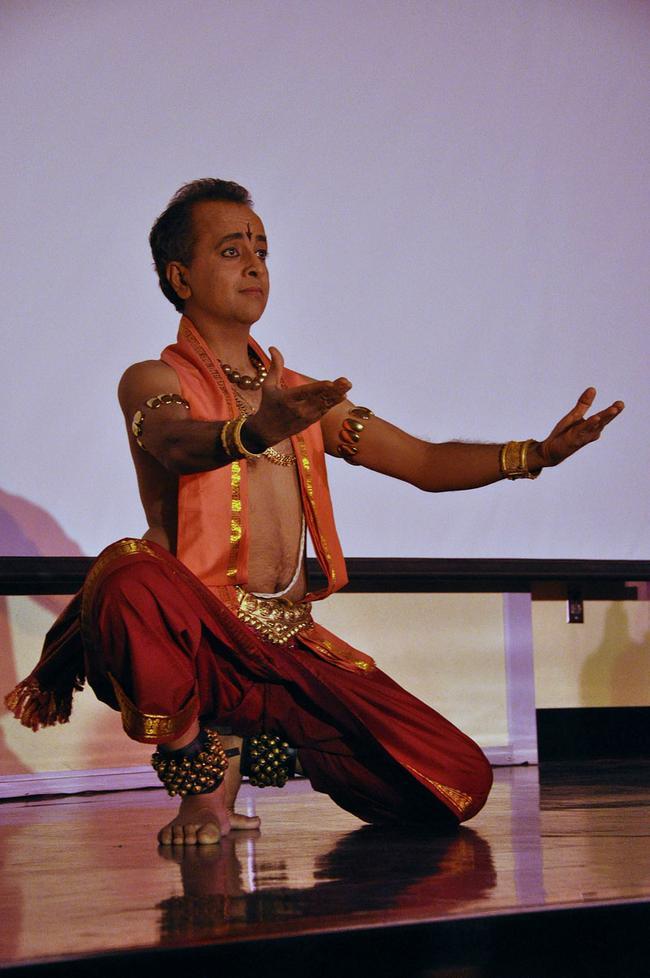For Guru Prasanna Kasthuri, a smile conveys more than happiness. When he dances, Kasthuri tells a story of good verses evil — a story told though his facial expressions.
Kasthuri danced for an audience in Jesse Auditorium on Sunday. He performed the dance “Bahulya,” which is a variation of the traditional Indian dance “Bharatanatyum”.
“Bharatanatyum” comes from the words bhava, raga, tala and natya, which mean expression, music, rhythm and classical Indian musical theatre. It is considered to be a fire dance, traditionally performed by young children and women.
MU Dance and Recreation Association, known as MUDRA, invited Kasthuri to MU for his first performance at the unviersity. MUDRA’s purpose is to explore and promote Indian culture through dance.
Aditi Bandyopadhyay, secretary and dance instructor for MUDRA, said Kasthuri’s performance will help dispel many stereotypes about Indian culture, specifically dance.
“More performances of Indian classical dances need to be presented by well-trained professionals, so that many people can get the right idea about the perfection required for the dance form,” she said. “People are recognizing Indian culture by dances set to peppy tunes, which are not true representations of our tradition of music, dance and art.”
While he was performing, Kasthuri wore traditional Indian pants and ankle bells with straps. He used facial expressions in order to display the art of storytelling, which is the purpose of the “Bahulya”.
Kasthuri said not only did the dance represent mythical stories being told but also a connection with a higher power.
“When you dance, you are finding a piece of your soul with what you’re doing,” he said. “Some dancers do it and find no connection. This is because they do not take the message of the dance to heart and show expression and feel the rhythm within you.”
Kasthuri said through his performance, he would be able to keep the audience interested and make others respect the art of storytelling through the dance.
“This dance is about structure and movement but also about letting people realize what they can do through the dance,” he said. “If I am here dancing, I am creating my own world for you to see, similar to the different sections shown. I am simply showing different sides of the essence of a dance.”
Audience member Hemea Srinivisan, who is familiar with “Bahulya,” said Kasthuri’s variation from the original dance did not bother her but rather interested her in different ways of expression.
“The dance he is showing is not exactly traditional but with his facial expressions and movement he is creating a strong image of a misinterpreted culture,” Srinivisan said. “…which is what this dance is all about – the feeling in oneself.”








